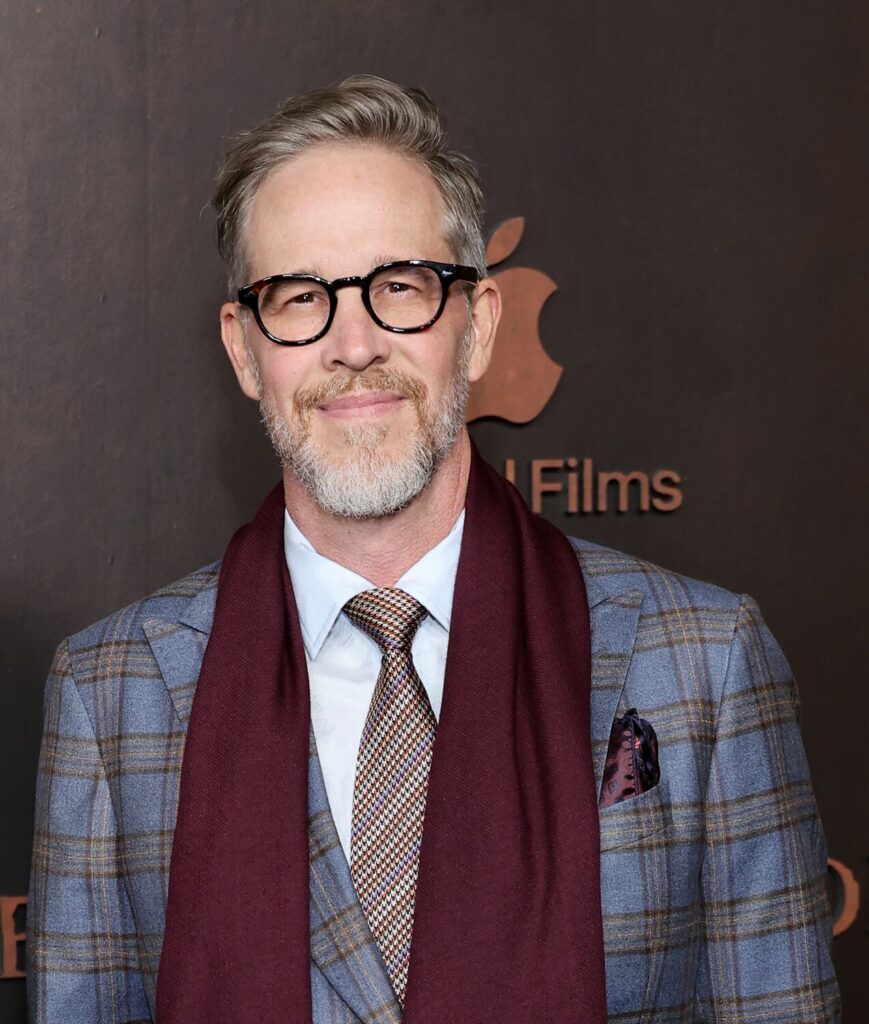Joey McFarland, a producer on Antoine Fuqua’s “Emancipation,” apparently did not think through the ramifications of showing off the original 1863 “scourged back” photo of an enslaved man at the film’s L.A. premiere Wednesday.
It gets worse: McFarland proudly discussed the historical photo of the man — whose story inspired “Emancipation” — with a red-carpet reporter from Variety.
Though Will Smith portrays “Peter” in the movie, the man’s given name was Gordon, according to Frank H. Goodyear III, a former assistant curator of photographs for the National Portrait Gallery.
Gordon ran away from the plantation where he was enslaved while recovering from a horrific beating, Goodyear wrote for America’s Black Holocaust Museum in Milwaukee. The photo was taken when he was being fitted for a uniform after running 80 miles to join the Union army in Baton Rouge, La.
“This is the original photograph from 1863, and I wanted it to be here tonight — I wanted a piece of Peter to be here tonight,” McFarland told Variety’s reporter in a video posted Wednesday night. “Sadly to say, so many artifacts and photographs have not been preserved or curated or respected. And I took it upon myself to curate and build a collection for future generations.”
McFarland, who is white, said that he has been collecting for a “very long time” and that he intends for his collection of photos to be donated for educational purposes when he dies.
“For me, my love of history, my love of truth, my love of larger-than-life individuals that had an impact on not just some people’s lives but the world, it’s worth fighting for,” he added. “It’s worth preserving. It’s worth seeking out and protecting. That’s what I sought to do. And the story that came out of that, it transcends entertainment, it transcends cinema. It is a lesson, it is a conversation that needs to start and continue and keep growing and evolving.”
McFarland, who was also a producer on “The Wolf of Wall Street” and “Daddy’s Home,” said it was important to “reckon with the past” so that future generations don’t repeat the same mistakes. His Instagram account displays a number of photographs from what he calls the #McFarlandCollection.
“I’m really excited about discovering and acquiring these incredibly rare and important photographs from the Civil War era (1860s),” McFarland wrote Nov. 22 in an Instagram post that showed two enslaved children. “Please note my collection is for historical preservation, education, and storytelling.”
Some commenters praised his efforts — “That’s wild. Happy you understand the importance of them” — while others weren’t buying his motive.
“This is such a stark example of white savior complex. Who are you that you think YOU are the best person to preserve this piece of Black history?,” another user wrote. “And that you walk around showing them off like baseball cards is even more problematic. This ain’t it.”
McFarland did not respond immediately to The Times’ request for comment Thursday.
On Twitter, commenters were focused on McFarland’s mistakes — chief among them bringing that photo to a movie premiere and owning the thing in the first place.
Franklin Leonard, a producer and founder of the respected Black List of best unproduced screenplays, tweeted that he needed some “real time” to process what he had seen.
“Why do you own the photograph?,” he tweeted Thursday. “Why did you bring it to a movie premiere if the intent is to preserve it respectfully? You wanted ‘a piece of Peter’ here? You collect slave memorabilia that will be donated upon your death? What do you do with it in the meantime? So many questions.
“don’t know, man, but bringing ‘a piece of Peter’ that you ‘own’ to the red carpet of a movie that’s personally enriching you so that you can collect more slave memorabilia that you’ll keep until your death,” Leonard continued in more tweets. “When do I get my own anger translator…”
One user, @BellanMelissa, tweeted: “What a colossally inappropriate thing to do on every level. He shouldn’t own it. Shouldn’t use the wrong name for it. And definitely should not bring it to show and tell.”
“His name was Gordon. His enslavers called him ‘Peter’ because they refused to use his birth name. The way we strive for empathy & humanity, but still miss the mark is so grossly heartbreaking — and exhausting,” Twitter user @talk2spirit wrote.
And user @erockjamz wrote, “i don’t get why (for ytppl) trying to humanize already dispossessed black people has to involve reliving their lowest, hardest, moments. carrying a ‘piece of someone’ even if it’s just a personal memento to you TO A MOVIE PREMIERE is just gross. no rest! even in death.”
As to whether McFarland owns the actual “original” photo, even that may be up for debate.
The photographic team that shot the image “mass-produced and sold copies of Gordon’s portrait in the small and popular format of the time, known as the carte-de-visite,” Goodyear, the former National Portrait Gallery curator, wrote for ABHM. “The image provoked an immediate response as copies circulated quickly and widely.” Commercial photographers in Philadelphia, New York, Boston and London ultimately produced copies as well.
“Recognized as a searing indictment of slavery, Gordon’s portrait was presented as the latest evidence in the abolitionist campaign,” Goodyear wrote. The image, along with two others of Gordon, was reproduced in the July 4, 1863, edition of Harper’s Weekly.
Though there are a couple of stories about Gordon’s military service, the records are incomplete, Goodyear wrote. “There are no further records indicating what became of Gordon. Yet, this famous image of him lives on as a searing testament of slavery’s brutality and the fortitude displayed by so many African Americans during this period.”

